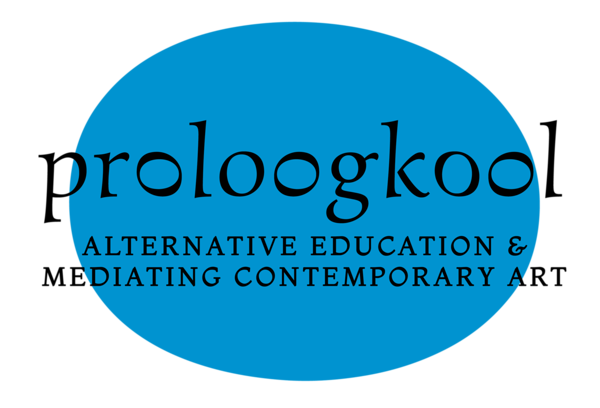Ingrid Allik x Räpina Paper Factory
Ingrid Allik (EST) & Räpina Paper Factory with Aigi Orav (EST), Tiina Kaljuste (EST), Kaisu Lundelin (FIN), Riikka Wesamaa (FIN) and Martin Allik (EST/SWE)
Permanent public space installation
The Räpina Paper Factory has been in operation since 1734, making it the oldest continuously operating factory in Estonia. Although many people associate the Räpina Paper Factory with coloured drawing paper folders, the company’s main focus is the production of packaging edge protectors for the international market. The paper mill was green before it became popular: to make their products, they collect scrap paper, which is then reprocessed with constantly updated modern technology.
What could be a better art of survival than dignified heritage combined with modern technologies? The artist Ingrid Allik, who together with her colleagues from Estonia and Finland spent some time during the summer of 2023 in a residency at the paper factory and the Räpina Creative House, also experienced this in her earlier works, interpreting ceramics and clay in a new way. Birches Cubed is a new landmark in Räpina’s public space, combining landscape architecture and objects created by artists to tell the story of the long history of paper making in the city. Taking advantage of the hitherto rather insignificant strip of grass between the factory’s car park and the entrance, the joint contributions of artists, landscape architects and the factory have created both a thoughtful gateway to the site and simply a good public space for stopping and taking a closer look.
“Birches Cubed”
The “underground”, invisible part of the work consists of landscaping work carried out according to the artists’ vision by the Räpina Paper Factory, the owner of the land. The area was cleared and evenly filled with soil, and clearly distinguishable boundaries between the driveway and the car park were created. Whereas before people simply walked across the grass from the car park to the factory, now a well-maintained footpath leads to the factory, to which the City of Räpina added an official crossing.
The “above-ground”, visible and tangible part of the installation combines the landscaping with the elements created by artists, which are characteristic of the history of paper production in Räpina. In addition to the one stately birch tree already growing here, 18 new birch trees were planted in groups of varying sizes. The birch trees were chosen because paper was originally made from birch wood in Räpina. The red bricks used in the installation are in keeping with the historic building of the paper mill. Some of the bricks are handmade, which is another reference to both tradition and the importance of craft. Also on display are packs of waste paper, which across the street, in the factory, are waiting to be recycled into new products. In addition, the artists have mixed together clay and scrap paper from the factory's production waste, covering the cubes and supporting them with the packaging edges produced at the factory. As a final layer, the meadow carpets bind the different elements together to create a lush green space full of life.
The designed environment invites you to explore it from many angles and to touch different materials, but in fact the area is just beginning to live its own life: of all the elements brought here, the birch trees will last the longest; the tree supports will be removed after a few years, the scrap paper cubes and everything else can be replaced or removed altogether. According to Ingrid Allik’s wishes, something new and something old, something permanent and something temporary have come together.
Many thanks to: Kaur Palm & Räpina Paberivabrik, Andres Allik, Tetsutaro Komago, Hele-Mall Maask, Leo Kütt & Räpina Loomemaja, Rait Lõhmus & EKA klaasikunsti osakond, Räpina linn, Valdis Zariņš & Lode Group, Riho Puusepp & Ryxsan OÜ.
INGRID ALLIK (b 1958) is a ceramicist whose multifaceted work is characterised by autobiographical and nature-inspired forms. Allik experiments with different clays, glazes and firing techniques, linking ceramic objects to found objects; she is also one of the top experts on Japanese raku techniques in Estonia. In her installations, she uses a wide variety of materials, not considering one more valuable than another, but bringing out the coherence and connotations of the works as they are displayed. Allik works as an Associate Professor at the Estonian Academy of Arts; in 2020 she was awarded with Estonian Cultural Endowment’s annual award and in 2024 with The Order of Merit of the White Star, IV class.
RÄPINA PAPER FACTORY was established in 1734 and is the oldest industrial enterprise in Estonia. In 1873, the first paper machine arrived in Räpina from Germany, and the paper mill became a paper factory that produced a wide variety of writing and printing paper (including paper for money and newsprint). Today, the most important production line is edge protectors for the international market, made from paper and paperboard produced in-house. Räpina uses only waste paper collected in Estonia as raw material for its products. Together with customers, new special solutions are constantly being developed and, together with Estonian engineers and machine builders, a number of unique pieces of equipment have been developed, making the company an undisputed leader in Europe with its machinery, combining modern and environmentally friendly technology with the company’s almost 300 years of experience.
Opening event 07.06.2024 (photographer Jürgen Vainola):











































